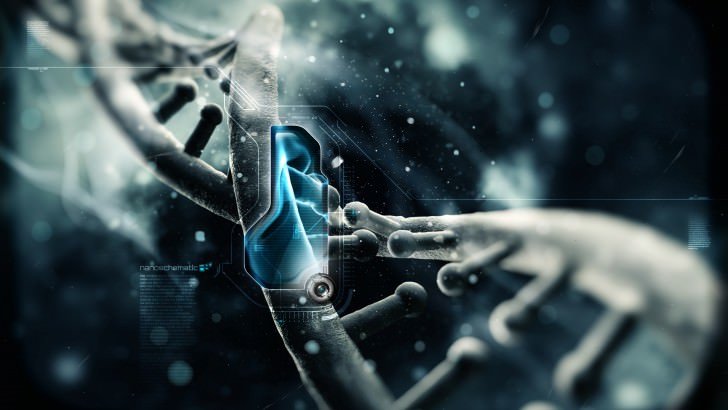The Future is Nano: How Nanotechnology is Shaping Our World
In today’s rapidly evolving world, the focus has shifted from dreaming big to embracing the power of the small. “Small is good” is now the mantra guiding cutting-edge advancements, particularly in the realm of nanotechnology (NT). Nanotechnology refers to the branch of science and engineering dedicated to designing, producing, and using structures, devices, and systems by manipulating atoms and molecules at the nanoscale — typically 100 nanometers or smaller. For context, one nanometer is a billionth of a meter.
National Nanotechnology Day
National Nanotechnology Day, celebrated annually on or around October 9, raises awareness about its profound impact on our lives. The date, 10/9, is a nod to the nanometer scale (10^-9 meters). This year’s theme focuses on its role in addressing climate change and improving global health. Around the country, schools, universities, and organizations are planning events to highlight the advances in nanotechnology and their effects on everyday life.
The Origins
Dr. Heinrich Rohrer (1933-2013) is often hailed as the founding father of nanotechnology. This field began in earnest in 1981 with the invention of the scanning tunnelling microscope, which allowed scientists to visualize and manipulate individual atoms. IBM researchers Gerd Binnig and Heinrich Rohrer received the 1986 Nobel Prize in Physics for this groundbreaking invention.
It is a relatively young field, formally defined by Norio Taniguchi of Tokyo Science University in 1974. The term “nano” comes from the Greek word for dwarf and refers to one-billionth of a meter. Nanoparticles, which are typically between 1 and 100 nanometers in size, behave as unique units regarding their properties and transport mechanisms. Since its inception, it has grown into an interdisciplinary field encompassing many branches of science and engineering.
The Features and Applications of Nanotechnology
Nanotechnology has opened up new possibilities in a variety of industries. It reduces costs, creates stronger and lighter materials (like wind turbines), and improves fuel efficiency. Additionally, some nanomaterials provide excellent thermal insulation, helping save energy.
In medicine, it plays a pivotal role in the early diagnosis and treatment of diseases such as cancer and neurodegenerative disorders. For example, nanoparticles enable precise drug delivery, which can make treatments more effective and minimize side effects. Furthermore, it has revolutionized the development of new drugs, turning once-incurable diseases into treatable conditions.
The food industry has also benefited from nanotechnology, which can prolong the shelf life of fruits and vegetables by embedding antibacterial nanoparticles, such as silver, into packaging materials. Many food manufacturers already use nanotechnology, although the concentration of these particles is so low that they pose no risk to human health or taste.
Nanotechnology is present even in cosmetics, where nanospheres and nanoemulsions enhance the delivery of ingredients deep into the skin. L’Oréal, for instance, has developed an anti-wrinkle cream containing polymer nanocapsules that better deliver active ingredients.
Nanotechnology in India
In India, nanotechnology is a rapidly expanding field. The Nanotechnology Initiatives Division has been working towards establishing an ecosystem for electronics manufacturing through research in nanoelectronics. This effort has led to the creation of world-class nanofabrication facilities and the development of products to meet societal needs.
Despite its potential, private sector investment in nanotechnology research remains minimal. However, research from academic institutions indicates the transformative impact of it in addressing local needs. For instance, researchers at IIT Madras have developed a nanotechnology-based solution for decontaminating arsenic-laden water, while a team at IIT Delhi has created a self-cleaning nanotechnology for textiles.
Key institutions like the Indian Institute of Nanoscience in Bangalore, Mumbai, and Kolkata, along with initiatives from the Department of Information Technology, Department of Science and Technology (through the Nano Mission), and COEs in Nanoelectronics by MeitY, are driving its growth across the country. Companies like Yashnanotech, Velbionanotech, Nanoshel, and Nanobio Chemicals are leading the way in the commercialization of nanotechnology.

Nanotechnology and Artificial Intelligence
Nanotechnology and artificial intelligence (AI) are two groundbreaking technologies that complement each other to create real-world applications. While it involves the manipulation of materials on a molecular scale, AI focuses on creating smart systems capable of making decisions and uncovering patterns in data. When combined, these technologies have the potential to revolutionize various fields, from healthcare to manufacturing.
For instance, AI algorithms can analyze data collected by nanotechnology sensors, enabling more precise medical diagnoses and the development of smarter materials. This symbiotic relationship promises to unlock further innovation, particularly in industries such as robotics, finance, and autonomous vehicles.
The Future of Nanotechnology
The future of nanotechnology holds immense promise, with the potential to revolutionize healthcare, agriculture, and manufacturing. In healthcare, scientists are developing nanobots capable of detecting early-stage cancer by measuring biomarkers at low concentrations — an advancement that could dramatically improve patient outcomes.
In agriculture, it is contributing to climate-smart practices, improving nutrient absorption in plants, and enabling more efficient disease detection and management. Meanwhile, the manufacturing sector is benefiting from stronger, lighter, and more durable materials, such as nanotubes and nanoparticles, which could replace traditional manufacturing processes shortly.
Nanotechnology is projected to become an industry worth $8.6 billion by 2025. With sustained investment, interdisciplinary research, and global collaboration, it has the potential to revolutionize the way we live, work, and care for our planet.
Conclusion
As nanotechnology continues to evolve, it will have an ever-increasing influence on our world — from healthcare innovations to environmental conservation. In the coming decades, it could even enable us to build complex organs and structures using simple materials like coal and water. The small, it seems, is only getting bigger.
For more such interesting blogs: visit https://vichaardhara.co.in/


